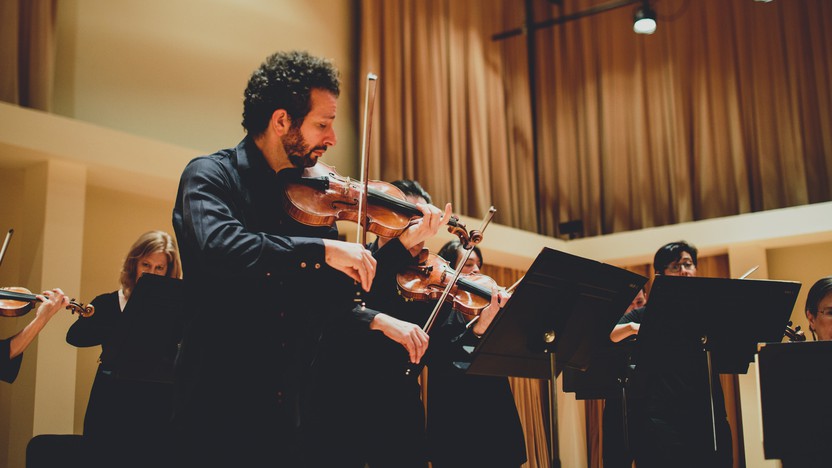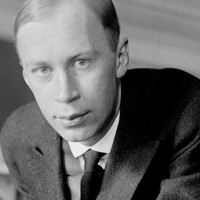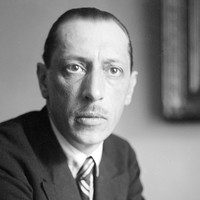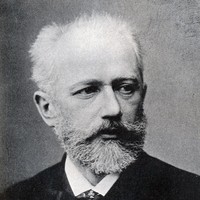Tchaikovsky’s Serenade for Strings



Jean Sibelius was Finland’s first and greatest musical hero. He rose to fame at the start of the twentieth century on the strengths of his first two symphonies and the tone poem Finlandia — works that gave voice to a burgeoning national identity just when Finland began agitating for independence from Russia — and he did his part to foment change with patriotic songs and populist protest pieces. In that period he circulated with the leading intellectuals in Helsinki, often drinking, smoking and spending far too much in the process, until his concerned wife and friends suggested a move to the country. The family built a remote estate, dubbed Ainola after Sibelius’ wife, Aino, and Sibelius lived there from 1904 until his death 53 years later.
Sibelius composed the Romance in C Major during that time of transition, and the performance he conducted with the Musical Society of Turku (Finland’s oldest orchestra) helped raised funds to cover the construction costs. Composed in the same period as his legendary Violin Concerto, this short Romance for strings honors that genre’s origin as a simple, tuneful form of slow movement.
Aaron Grad ©2024

The orchestration of Prokofiev’s Violin Sonata No. 1 is made possible by generous support from Michael Hostetler and Erica Pascal.
Sergei Prokofiev settled in Moscow in 1936, nearly twenty years after he left Russia in the wake of the October Revolution of 1917. As an expatriate in Europe, he had found himself increasingly at odds with strident, modern tastes; meanwhile, Soviet audiences and authorities proved receptive to the composer’s “new simplicity,” as he dubbed his developing style. A string of successful film score and ballet commissions enticed Prokofiev back to his homeland on a permanent basis, and he entered the stream of Soviet music firmly established as a star.
The Violin Sonata No. 1 in F Minor demonstrates how Prokofiev’s applied his clear and forthright style in music of the heaviest emotions. He began the score in 1938, amid the Great Purge in which Stalin killed or displaced millions of supposed enemies; having stalled out after two movements, Prokofiev returned to the sonata in 1943, in the midst of World War II, and he finally finished it in 1946. The four-movement structure, alternating slow and fast movements, rekindles a tradition from early in the history of violin sonatas, as modeled by Arcangelo Corelli and George Frideric Handel. The slow first movement dominates the mood of the sonata in a way that it couldn’t as an inner movement, especially when its material returns to give the finale a slow ending, conveying a sound that Prokofiev likened to “wind in a graveyard.” After Prokofiev died in 1953 (on the very same day as the man who had become his tormentor, Joseph Stalin), the violinist for whom the sonata was written, David Oistrakh, played portions of it at the composer’s funeral.
In this new version commissioned by the Saint Paul Chamber Orchestra, the composer and pianist Stephen Prutsman (an SPCO Artistic Partner from 2004 to 2007) orchestrated Prokofiev’s piano part to convert this sonata into a dramatic concerto.
Aaron Grad ©2022

 Listen to Audio
Listen to Audio
“How fickle my plans are,” Pyotr Tchaikovsky wrote, “whenever I decide to devote a long time to rest!” Tchaikovsky’s time with his sister in Ukraine turned into a working vacation that summer of 1880, as he confided to his patron, Nadezdha von Meck. “I had just begun to spend a series of entirely idle days, when there came over me a vague feeling of discomfort and real sickness; I could not sleep and suffered from fatigue and weakness. Today I could not resist sitting down to plan my next symphony — and immediately I became well and calm and full of courage.”
Tchaikovsky’s plan for that music wavered between a symphony and a string quartet, until he landed on something in between: a serenade for string orchestra. The title and form of the work paid homage to Wolfgang Amadeus Mozart, the greatest composer of serenades, whom Tchaikovsky once praised as “the culminating point which beauty has reached in the sphere of music.”
The Serenade for Strings merges a Classical sense of order with Tchaikovsky’s own abundant gift for melodic expression. Despite the modest heading that promises a “Piece in the form of a Sonatina,” the first movement establishes a grand and noble tone with a reverent chorale. Instead of a minuet or scherzo, the second movement offers a flirtatious diversion in the form of a Waltz. The slow movement, labeled an Elegy, takes a more somber turn. In the finale, the “Russian theme” promised by the subtitle is an amalgamation of folk material that Tchaikovsky harvested from a printed collection.
Aaron Grad ©2021
Get driving directions and find nearby parking.
Find dining options close to the venue.
View seating charts to find out where you'll be seating.
Get driving directions and find nearby parking.
Find dining options close to the venue.
View seating charts to find out where you'll be seating.
